Neighbors have taken note of our traditional summer shade cloth improvisations (what Nishizawa Architects calls “vernacular uses”) and are now deploying their own shade cloth configurations in strategic locations over the sunniest areas of their deck. Along with shading work areas over our driveway, we’ve even hoisted some trapezoidal shade cloth over maybe a third of the garden in full sun this summer, and the plants do look happier for it. So I was gratified to see this utilitarian material getting some recognition from Nishizawa Architects and receiving an upscale treatment at the restaurant Pizza 4P in District 3’s Ward 6 in Ho Chi Minh City.
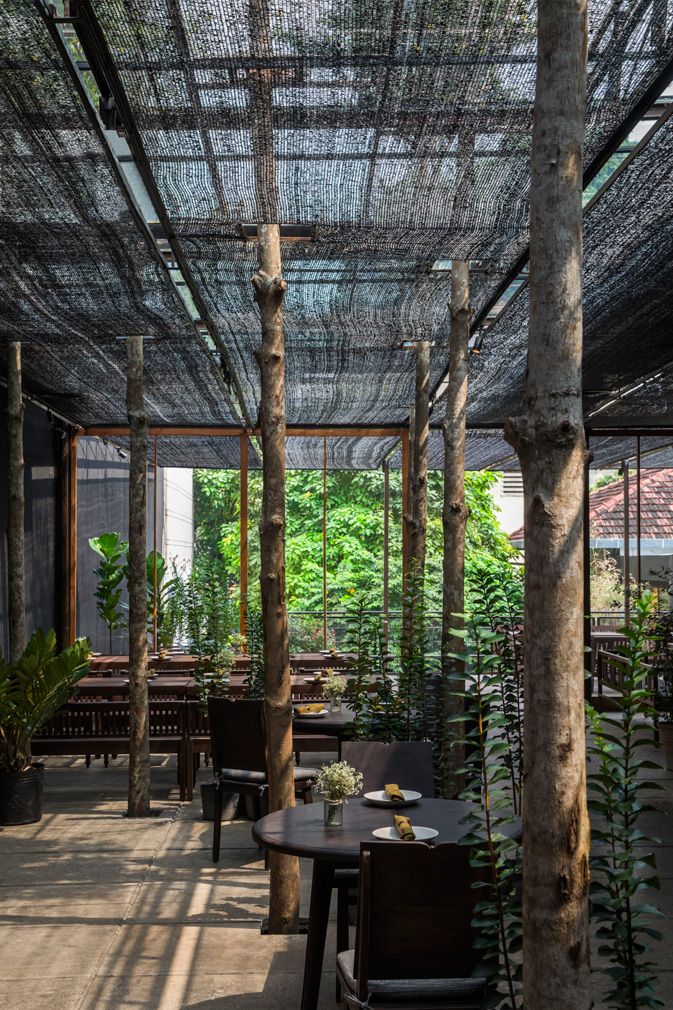
“Here, the tropical sunlight is so intense that we primarily recognize it as a physical hindrance, like the rain or the wind…You can easily imagine its harshness when you see most of the people outside wearing, even in the hottest season, coats and multiple layers of clothes to protect themselves from the sun’s strong rays. If you look around the city’s streets, you can also note they are full of add-ons purposefully arranged to create shades: observe the outdoor parking areas, the street-cafes, the flower shops or the play-yards in schools…Indeed, under such a heavy sunlight, it is as natural to seek and generate shadows as to have umbrellas and raincoats under rainy conditions.” (Text description provided by the architects.)
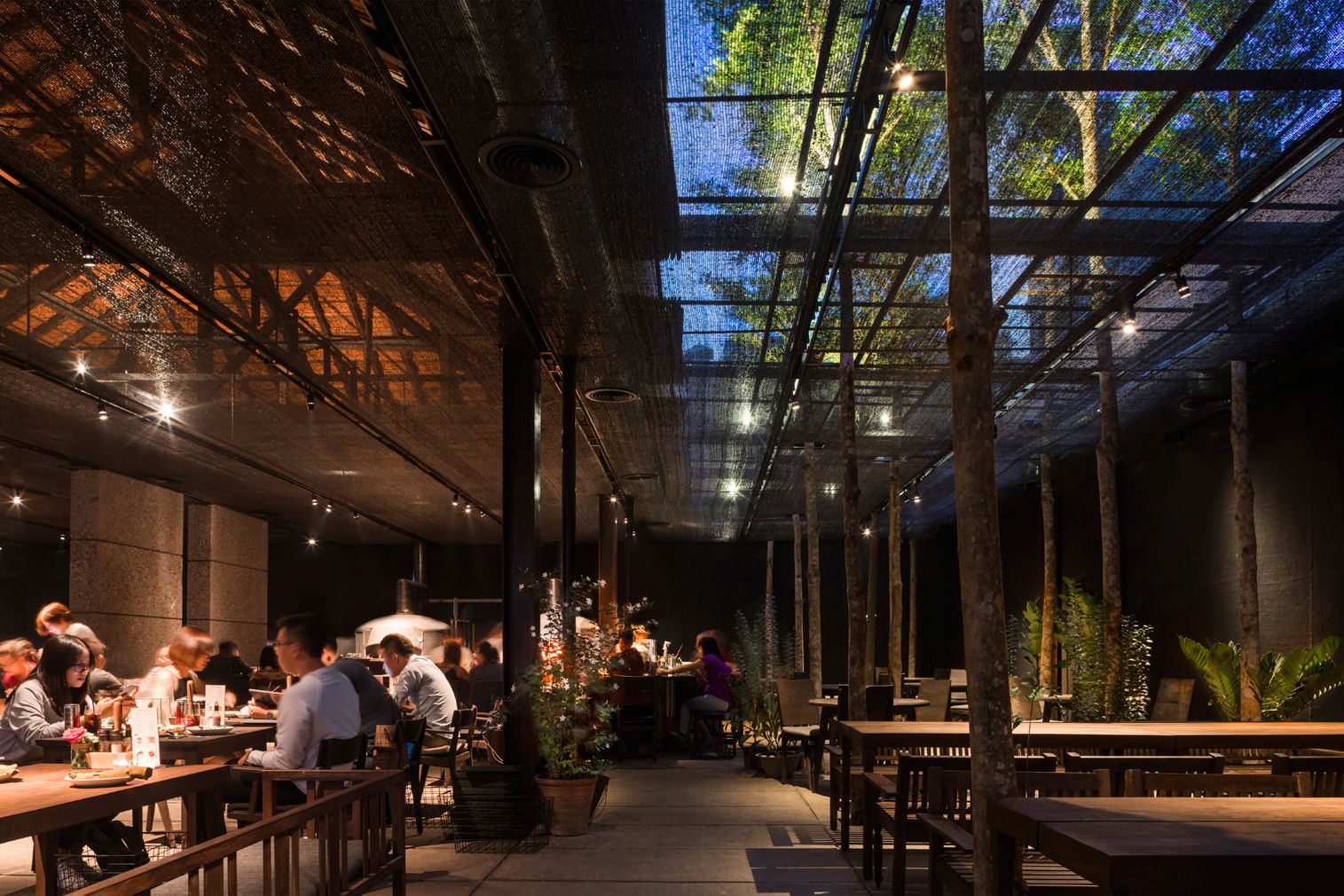
“An agricultural net. Made from polyethylene, it was initially developed for agricultural purposes, to soften the direct sunlight and raise foliage plants, shade-loving plants, grafted plants and seedlings more efficiently. However, with its extremely competitive price (less than 100 USD per roll of 2.5 m × 100 m), this agricultural equipment quickly made its way through all the scenes of people’s daily lives in Vietnam. Inspired by the vernacular uses, we sought with this project to define a new typology of tropical architecture: playing with this ordinary material, we used shades, shadows, and lights to compose space.”
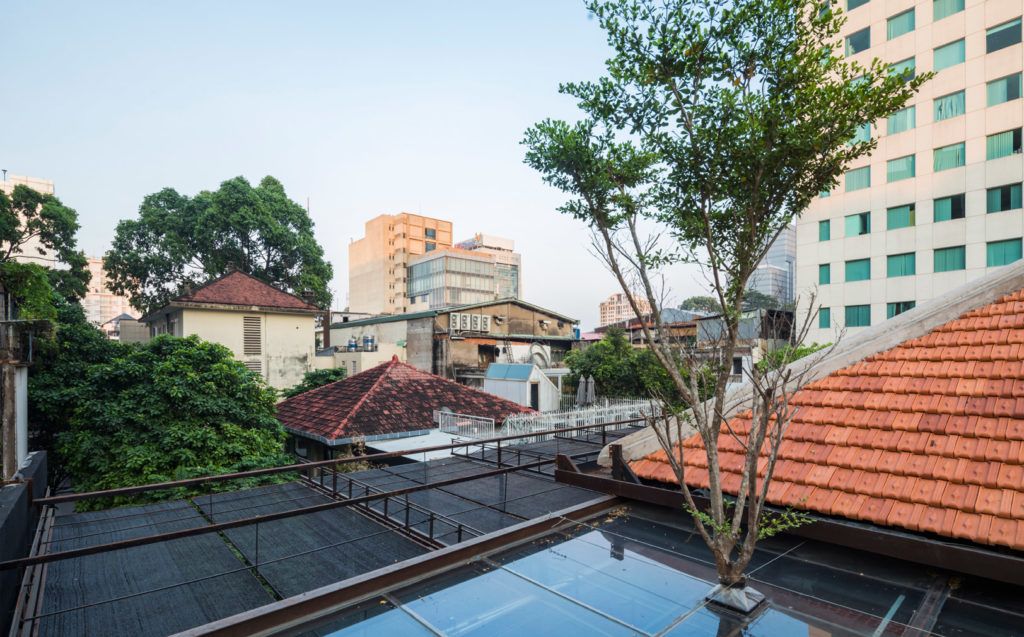
“In the center of Ho Chi Minh City, the project is located in a city block’s basin created by middle/high-rise commercial buildings surrounding its four sides…a narrow alley, connects it back to the main street. On the site, from the 2F terrace of the existing building, we can appreciate the peaceful roof-scape of old French style villas in front and the 7-10 stories commercial buildings or 25-30 stories high-rise hotels all around.”
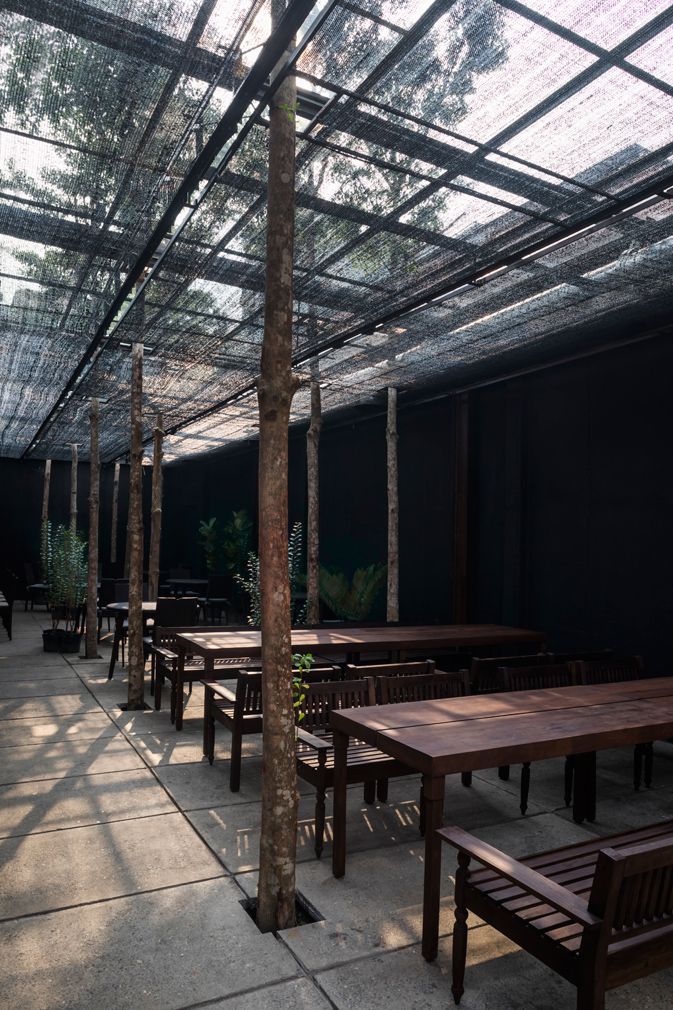
“The half-transparent black screen is not only used as a device that creates a sensitive shadow below, but also as a light top-window that softens the glare of a too bright sky and scenery.”
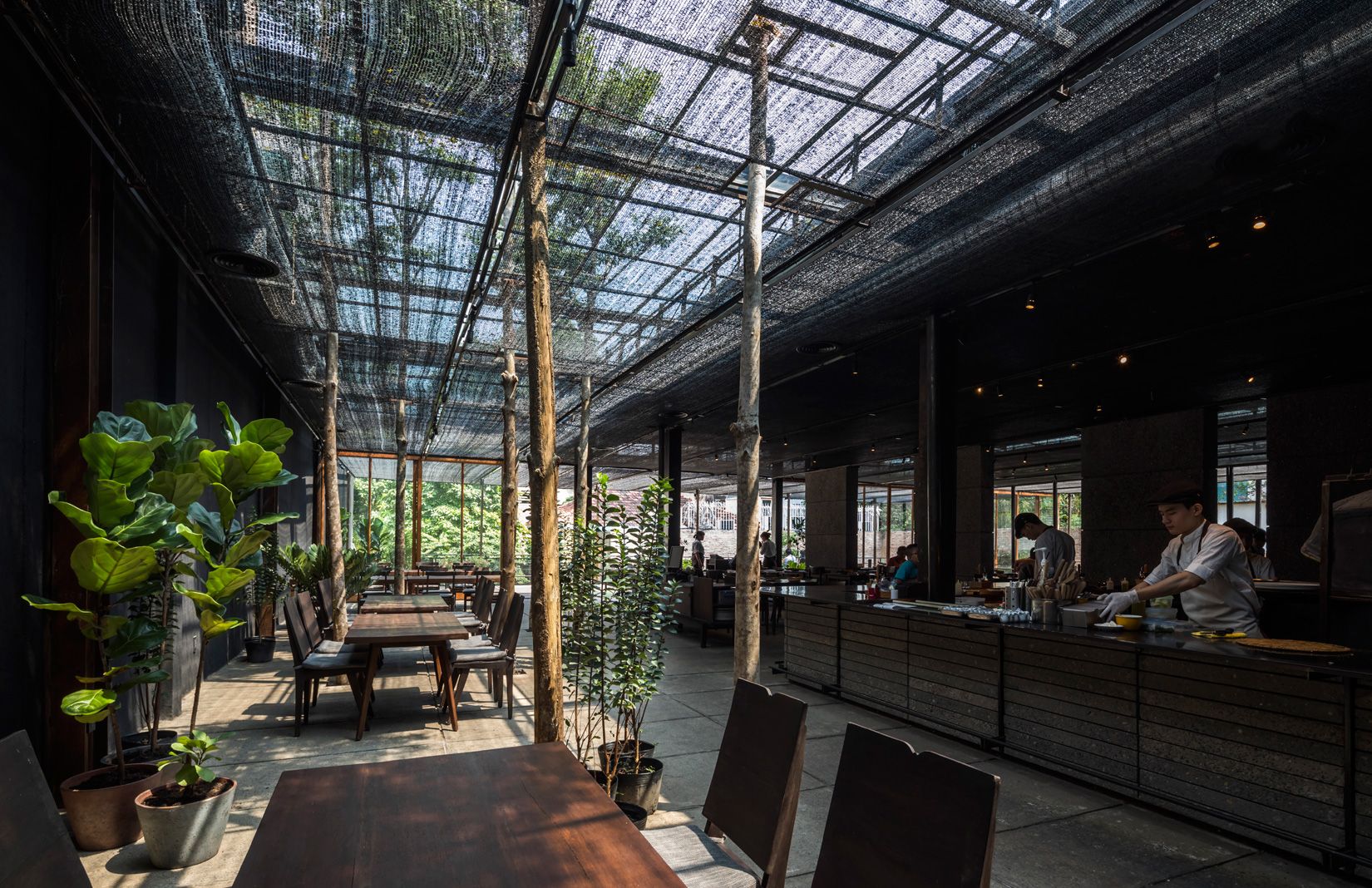
“Yes, finally, we intended to create a generous environment of tropical where humans and plants, indoor and outdoor, building-interior and urban-landscape all mingled… under one large shade.”
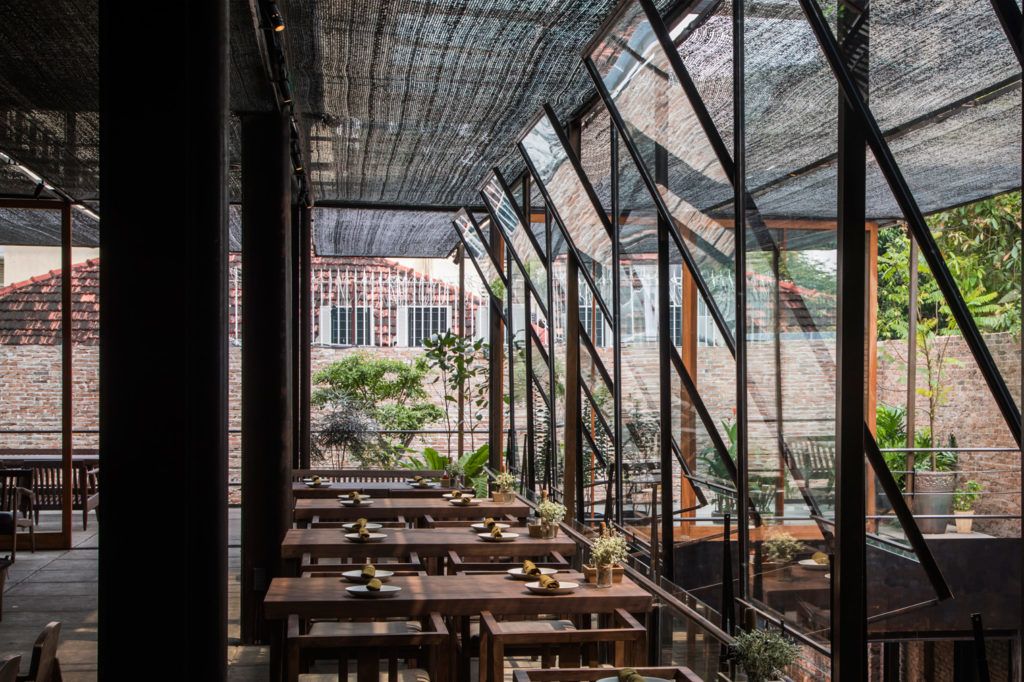
In place of temporary rope and line, the Restaurant of Shade has me rethinking designs for semi-permanent structures to support shade cloth, my summer garden’s new bff for mitigating the effects of super heatwaves like that nasty one we had this July.
via Archdaily, “Restaurant of Shade” and thespaces.


Temporary shade cloth devices are in use here too, mainly for some of the succulents that are exposed to the west sun-Semps and Sedums mostly . My company sells many full 150 x 6 rolls to vineyard managers this time of year -protecting the fruit before harvest. This is a recent development , along with picking at night when the sugars are more stable.
And so the process of adapting to climate change gains momentum…I hope cities, restaurants and other businesses, and homeowners also consider planting trees to provide not only the comfort of shade for humans but support the larger ecosystem. I’ve already begun adding shade cloth and shade structures myself as you know but I’d also be planting more trees if it wouldn’t run me afoul of my community’s short-sighted “view conservation” ordinance. I may plant 2 or 3 in the coming year anyway and let the chips fall as they may…
On a nursery shopping trip in late June this year, in the middle of our toughest heat wave, I was struck by the strength of shade cloth’s effect. Spent as much time as possible in the hoop houses covered by it, dashing out to the sun beds to pick out plants and returning quickly to plan the next foray. It made me think hard about rigging up some overhead panels at home.
But since then, it’s been an unusually cloudy and moderate-heat summer, so the urgency receded…
Welcome to the future.